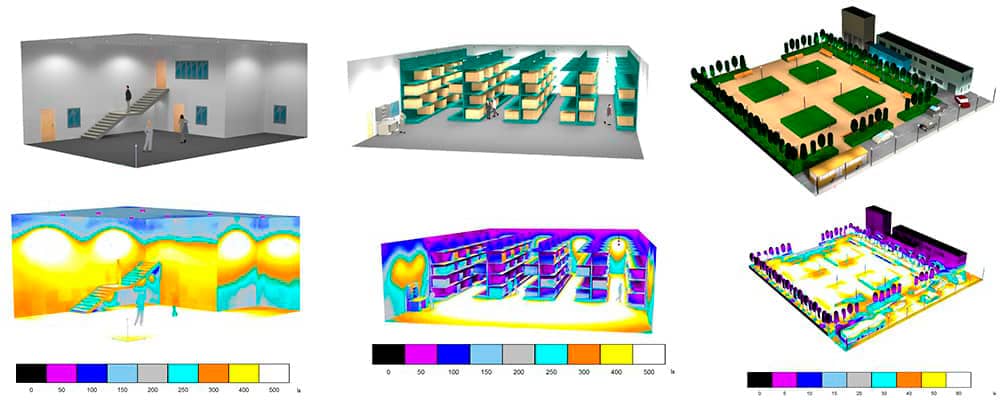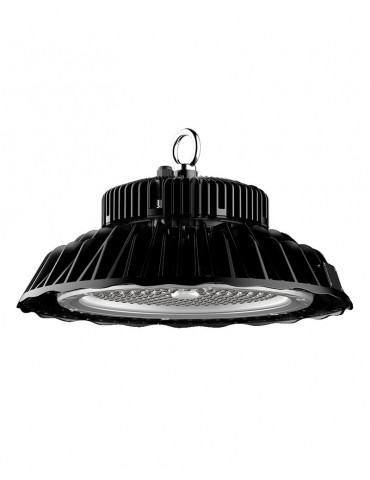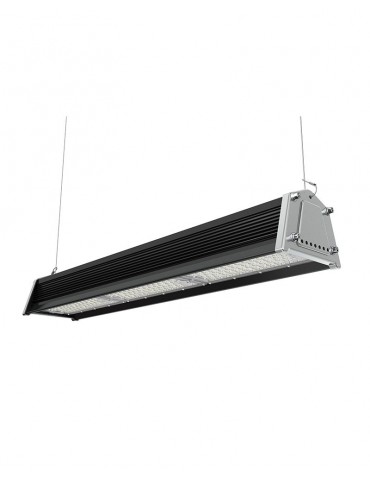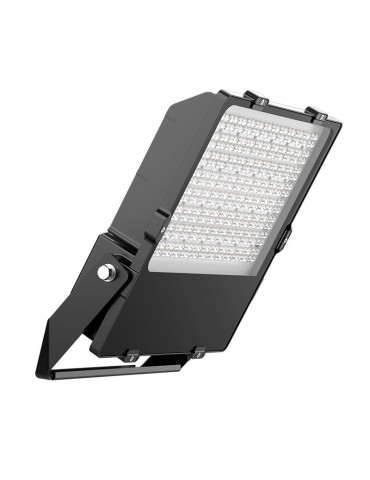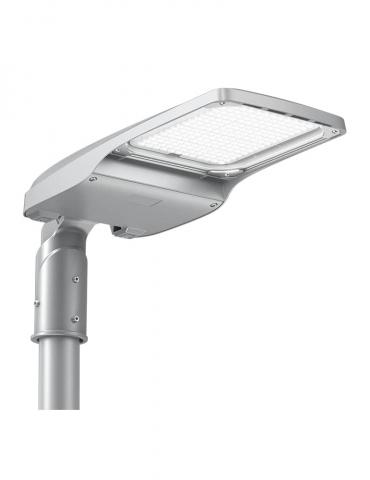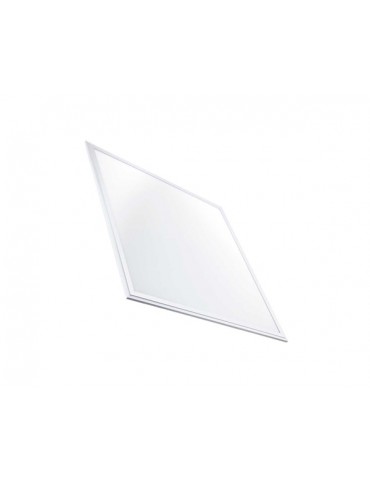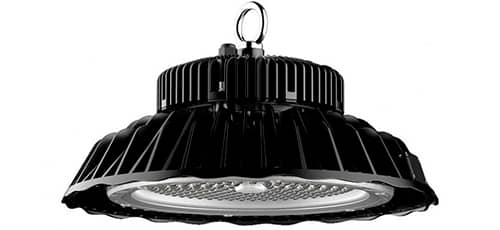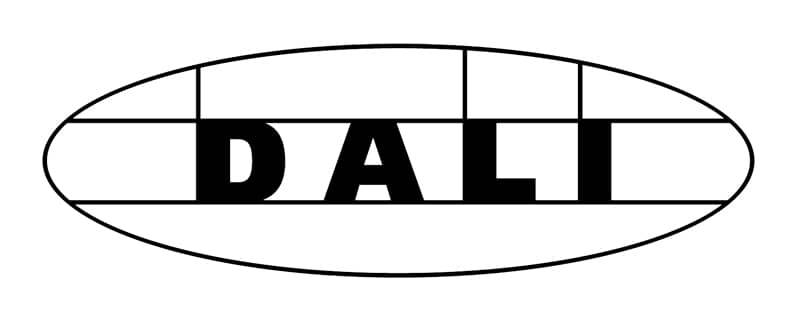
The DALI control system is a transmission protocol defined by the International Electrotechnical Commission (IEC) under the IEC 62386 standard. DALI (Digital Addressable Lighting Interface = Directionable Lighting Digital Interface) has been created to replace mainly 1-10Vcc analog systems. Therefore, in the creation of the DALI protocol has been taken into account the compatibility between the different drivers of LED luminaires from different brands and manufacturers.
NEED MORE INFORMATION AND PRICES ▶ REQUEST WITHOUT OBLIGATION
Main features of the DALI protocol
- The DALI control has been created as a control and communication protocol.
- Allows individual or joint control of DALI lighting within a DALI lighting system.
- Allows to control the on and off of DALI luminaires, regulate the luminous flux of DALI lighting, control LED luminaires using a DALI control system interacting with sensors, detectors, regulators, Control panels, etc. This interaction with the different components that make up the DALI lighting system will result in more efficient LED lighting and economic and energy savings.
- The DALI protocol allows compatibility between DALI LED luminaires from different manufacturers or brands.
- A DALI control system can be integrated with other more complex home automation systems.
- Each master DALI module can control a maximum of 64 DALI luminaires, grouped into a maximum of 16 groups.
- We can create different scenes in the same group of DALI luminaires, each performing a different order.
The DALI control is designed to be implemented alongside other home automation systems, as it is a flexible system that can be used in both office lighting and large installations. Today, the DALI regulation has become widespread in companies, as it is a control system that allows you to create work environments where LED lighting is essential to achieve maximum visual comfort and well-being for all workers. In addition, the DALI protocol is used in road lighting, both for public lighting and for lighting private buildings and homes. The possibility of customizing the DALI lighting control and reorganizing or redoing groups and scheduled actions once we have the installation in operation ensures that you do not have to pull new cables.
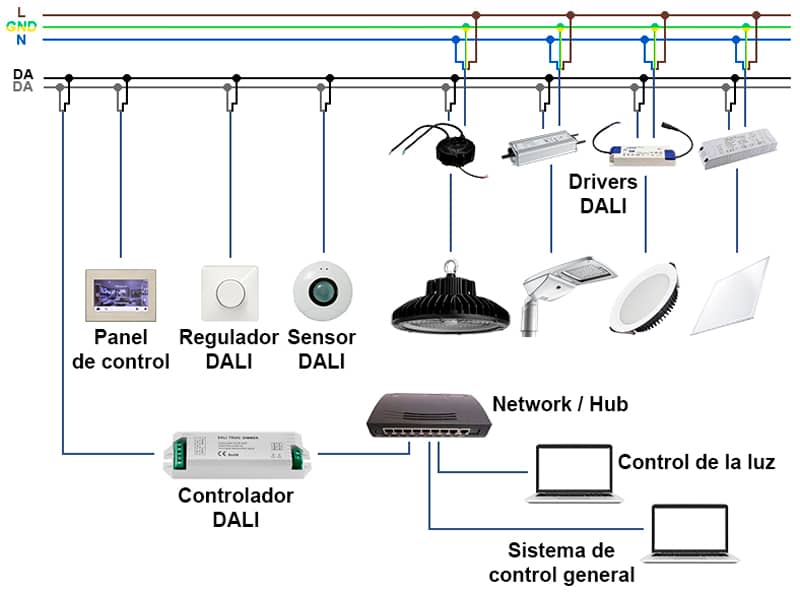
Devices comprising a DALI control system
- DALI controller or DALI master: receive information from the entire DALI lighting system, process it and generate control orders intelligently.
- Drivers luminaires: LED lamps must incorporate a DALI driver that receives the command from the master DALI and run it.
- Crepuscular sensors and motion detectors: these devices allow different configurations and act autonomously according to their state.
- DALI regulators (dimmers): must be specifically compatible for DALI regulation.
- Control and control elements: devices that allow the pre-programmed actions to be carried out, whether the light of a group of DALI luminaires is switched on, off or regulated.
- DALI power supply: devices that power the DALI bus.
- Repeaters: are devices that amplify the level or power of weak signals. In a DALI control system, they are used when longer wiring distances or more connected equipment is required than allowed.
- Converters or gateways: these are devices that allow us to communicate between the DALI lighting system and other intelligent or domotic systems.
- DALI software: is the program that allows us to address, program and adjust the various parameters of the DALI protocol.
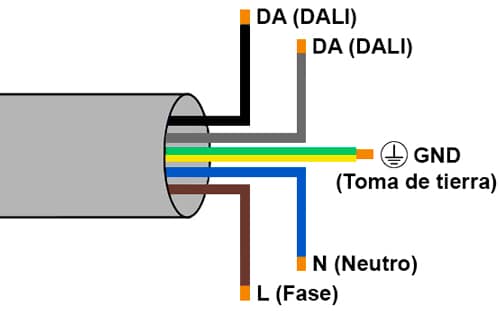
When a DALI lighting installation is planned for a new or existing building, it must be clear that, as this is a two-way communication system between the master and the LED luminaires, there will be a voltage drop, as with any normal electrical circuit.
A voltage drop of 2 V cannot be exceeded with a maximum bus current of 250mA. Therefore, the cable distance that we use must take this premise into account, although it should never be more than 300m.
The implementation of a DALI control system is very simple, as no shielded wiring is required. Just make sure that we have a hose of two additional cables to the power supply cables or a cable hose directly with five wires (phase, neutral, ground and both DALI bus). With either of these two options the configuration and installation of the DALI control will be quick and easy.
LED high bay dimmable by DALI protocol
The DALI LED industrial high bay has technical characteristics that make it an LED luminaire suitable for use in many spaces, mainly in industrial buildings, being able to adapt to installations of different heights.
Your DALI driver has the data bus so that the LED high bay is controlled by DALI protocol.

There is a new version for DALI, called DALI 2 that incorporates important advances and improves the shortcomings compared to the original DALI protocol. Some of the most notable improvements are:
- DALI 2 is compatible with DALI.
- Greater compatibility and standardization between the different components that integrate a DALI control system: DALI controllers, DALI lighting, amplifiers, sensors, switches, regulators, etc.
- Increased range and efficiency of DALI control.
- New devices and new control functions or commands are incorporated.
YOUR LIGHTING STUDIO WITH OUR DALI LED HIGH BAYS
Currently, there is a large offer of DALI LED luminaires with different characteristics and prices, which can be confusing and overwhelming.
For greater peace of mind of our customers, from Venalsol Smart light we carry out free light studies using software specialized, in which we simulate in 3D the areas to be illuminated, obtaining the most optimal option and that best suits the needs of each client.
